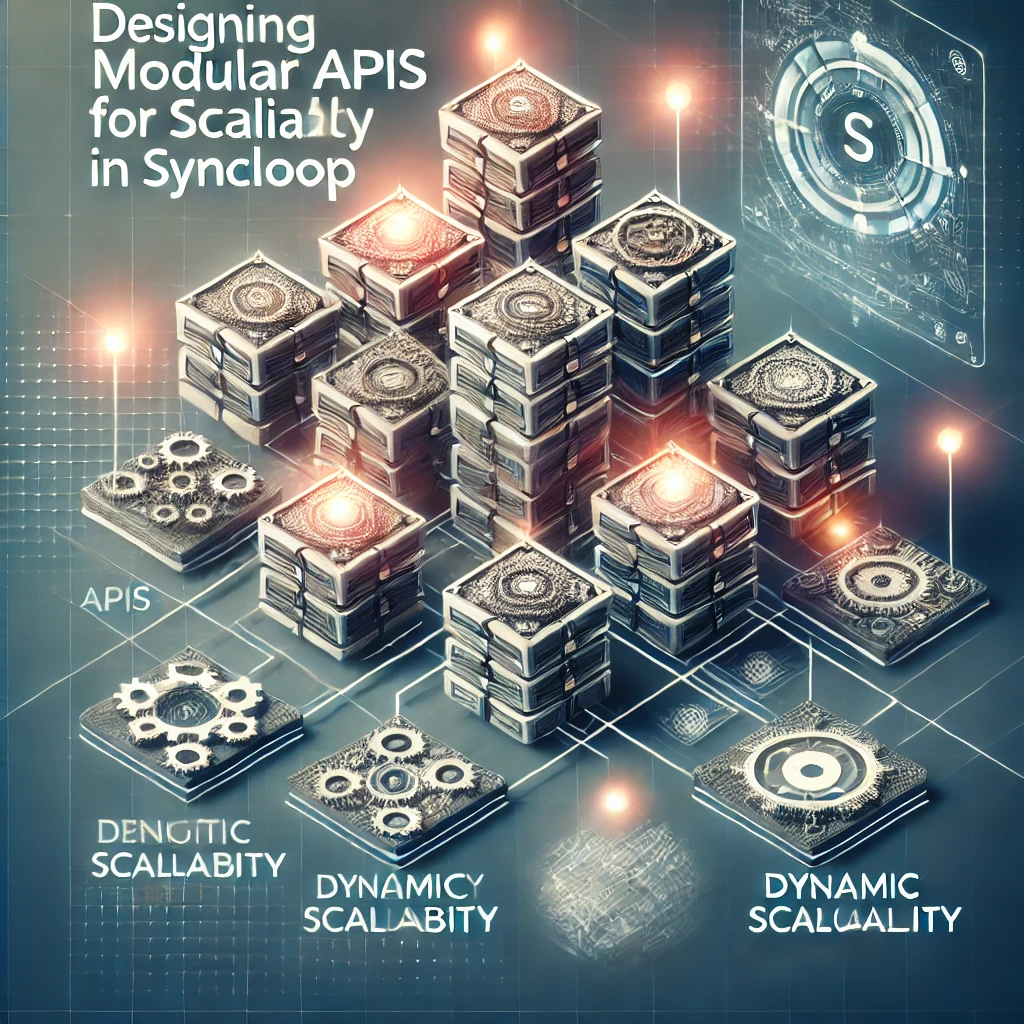Designing Modular APIs for Scalability in Syncloop

Syncloop provides tools to implement modular APIs with ease, ensuring scalability and seamless integration. This blog explores how to design modular APIs using Syncloop and best practices for building scalable, maintainable systems.
Why Modular API Design Matters
- Scalability: Allows individual modules to scale independently based on demand.
- Maintainability: Simplifies debugging, updates, and feature additions by isolating concerns.
- Reusability: Enables the reuse of API modules across multiple applications or services.
- Adaptability: Eases integration with new systems or technologies as needs evolve.
How Syncloop Supports Modular API Design
Syncloop provides a robust framework and features to facilitate modular API development:
1. Service Segmentation
- Create APIs as standalone modules with specific responsibilities, such as authentication, data retrieval, or notifications.
2. Dynamic Routing
- Use Syncloop’s routing tools to connect modular APIs seamlessly, enabling smooth communication between components.
3. Event-Driven Architecture
- Trigger workflows between modules based on specific actions or data changes, enhancing inter-module communication.
4. Reusable Components
- Build reusable API components that can be shared across applications, reducing redundancy and speeding up development.
5. Versioning Support
- Manage multiple versions of API modules simultaneously, ensuring backward compatibility and smooth transitions.
6. Real-Time Monitoring
- Track the performance and usage of individual modules, optimizing them independently for scalability.
7. Security Isolation
- Implement role-based access control (RBAC) and encryption for each module, ensuring data protection across the API ecosystem.
Benefits of Modular API Design with Syncloop
1. Improved Scalability
Scale high-demand modules independently, optimizing resource allocation and performance.
2. Enhanced Flexibility
Adapt to changing requirements by updating or replacing individual modules without affecting the entire system.
3. Faster Development
Reuse prebuilt components and focus on new functionality, reducing development time.
4. Simplified Debugging
Isolate issues within specific modules, accelerating troubleshooting and resolution.
5. Seamless Integration
Connect modular APIs to new services or platforms with minimal disruption.
Real-World Applications of Modular APIs with Syncloop
1. E-Commerce Platforms
- Separate modules for user authentication, product catalog, order processing, and payment integration ensure scalability during peak traffic.
2. SaaS Solutions
- Modular APIs for subscription management, user analytics, and feature toggling enable flexible and customizable offerings.
3. IoT Ecosystems
- Use distinct modules for device onboarding, data streaming, and real-time analytics to support diverse IoT applications.
4. Financial Services
- Securely handle transactions, fraud detection, and reporting with isolated API modules tailored to specific functionalities.
Best Practices for Modular API Design with Syncloop
- Define Clear Boundaries: Assign specific responsibilities to each module to avoid overlaps and dependencies.
- Optimize Communication: Use event-driven architecture or API gateways to facilitate efficient inter-module communication.
- Implement Robust Security: Secure each module independently with authentication, encryption, and RBAC.
- Monitor Independently: Track metrics for individual modules to identify and resolve bottlenecks effectively.
- Leverage Reusability: Design modules with general use cases in mind to maximize their reusability across applications.
- Document Thoroughly: Provide clear documentation for each module, including endpoints, parameters, and use cases.
Conclusion
Modular API design is essential for building scalable, flexible, and maintainable applications. Syncloop simplifies this process with tools for segmentation, dynamic routing, and real-time monitoring, empowering developers to create robust API ecosystems.
Whether you’re building e-commerce platforms, SaaS solutions, or IoT systems, Syncloop ensures your APIs remain scalable and adaptable to future demands. Embrace Syncloop to unlock the full potential of modular API design and deliver exceptional application experiences.
A conceptual visualization of modular API design powered by Syncloop, showcasing segmented services, dynamic routing, and real-time monitoring dashboards.
Back to Blogs